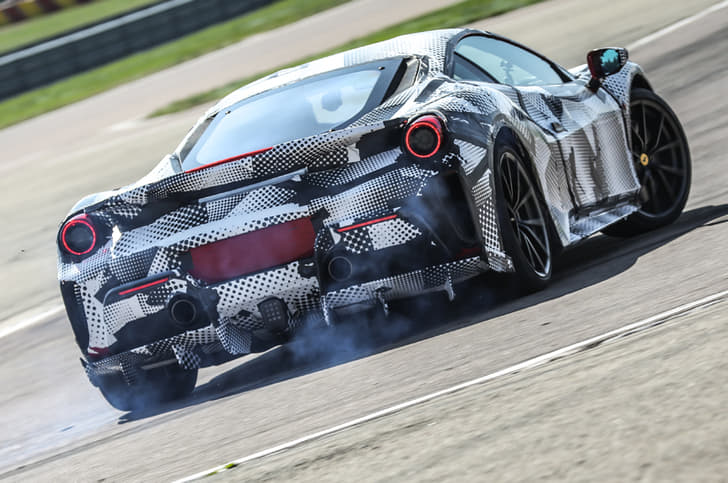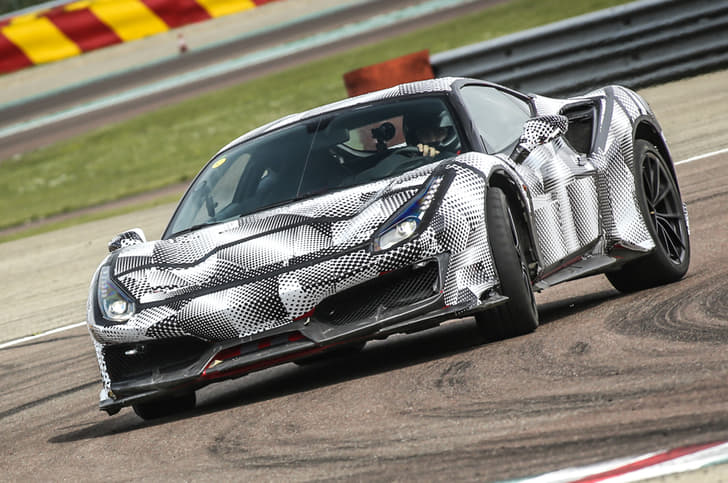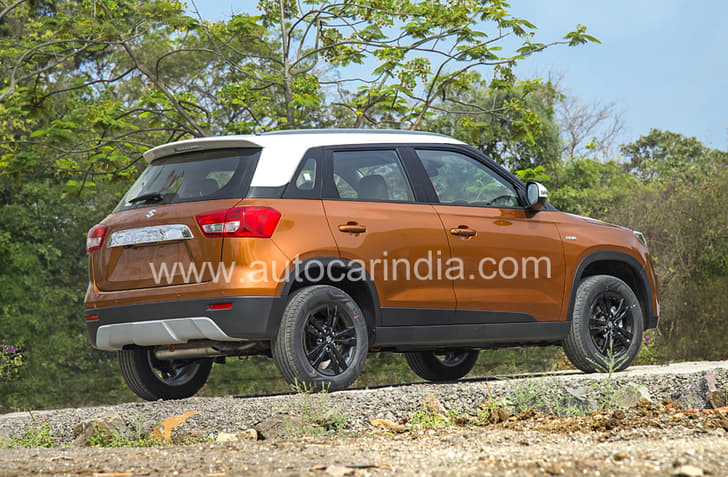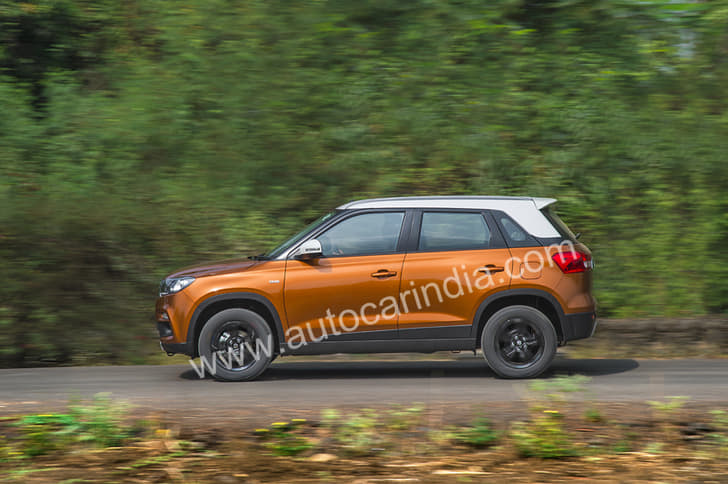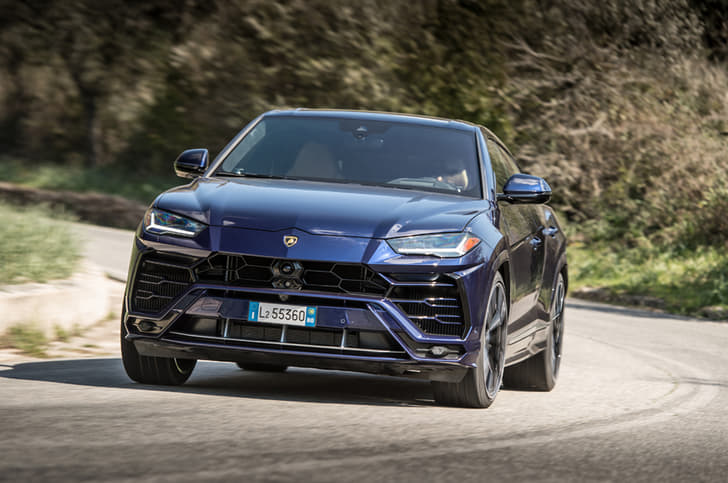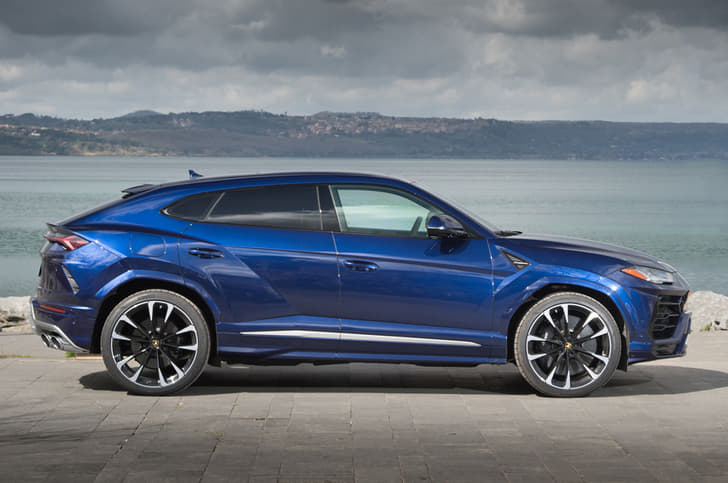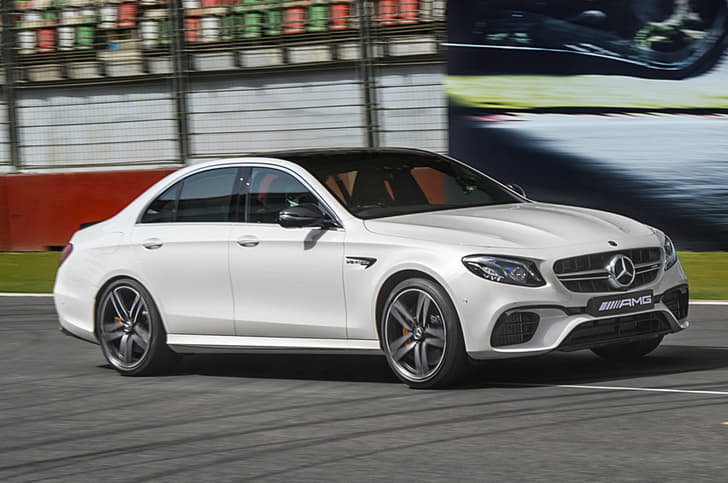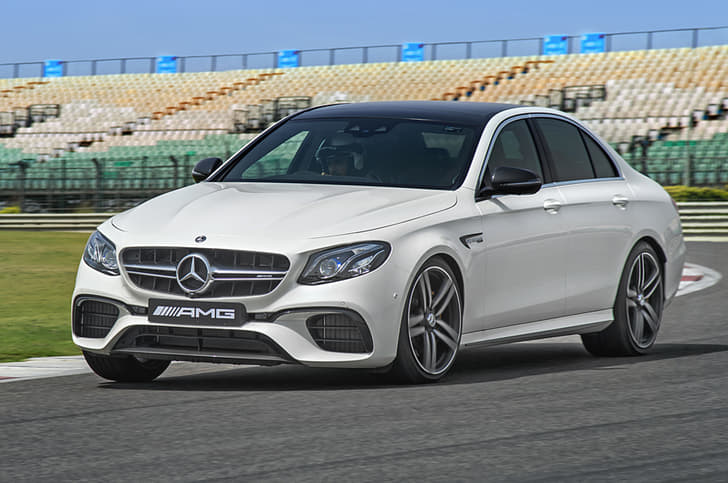The name says it all and it aptly describes what this hardcore variant of the Ferrari 488 is about. 'Pista' is the Italian word for ‘track’ and it’s on a track that the Ferrari 488 Pista has been developed to feel most at home. And it doesn’t get more at home than at Ferrari’s very own ‘Pista di Fiorano’ circuit, which is where I spend an afternoon finding out how sharp a track tool the 488 Pista really is.
The Pista follows in the footsteps of its illustrious V8-powered predecessors like the 458 Speciale, 430 Scuderia and 360 Stradale, all developed and honed (at Fiorano) to be the finest driving machines of their day. No doubt, it has big shoes to fill and Ferrari isn’t holding back. For starters, the Pista gets the most powerful V8 ever made by the Italian marque. The upgraded twin-turbo V8 displaces the same 3,902cc as the standard 488 but has undergone a raft of software and hardware changes which include a remapped ECU, a higher compression ratio (9.6:1), new pistons and higher lift camshafts. This shoves peak power up to a colossal 720hp, a good 8.3 percent increase. Torque too is up from 760Nm to 770Nm, but the headline figure is the power-to-weight ratio of 520hp per tonne, a massive 14 percent improvement over the 488GTB. Up on power and down on weight, like all the Ferrari track specials before it, the Pista is 90kg lighter than the 488GTB, which in no small way contributes to a staggering set of performance figures. The company claims a 0-100kph time of 2.8sec and an even more sensational 0-200kph time of 7.6sec. That’s quick by any supercar standard and puts the Pista squarely against its biggest rival – the McLaren 720S.
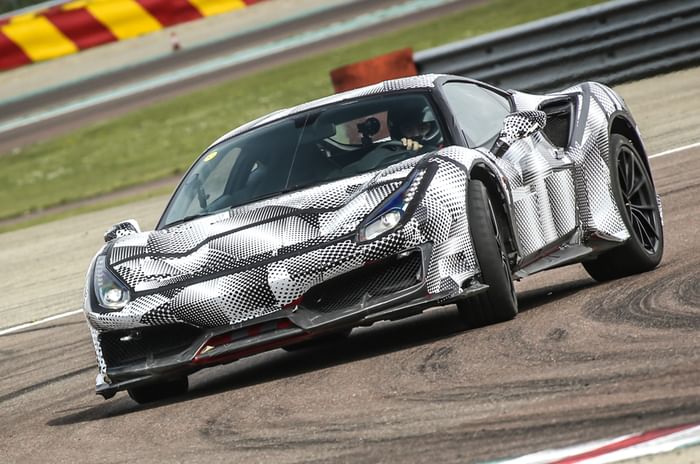
The Pista I’ve been handed is a pre-production prototype; it’s the reason it still wears a camouflage though I can’t understand why, especially since it was globally unveiled at the Geneva motor show. Ferrari says these prototypes are 90 percent ready for production and all that’s left for the final engineering sign-off, before the sales commence this June, are a few minor tweaks to the engine calibration.
The interiors are similar to the 488GTB but with an extra helping of Alcantara, leather and carbon fibre. It’s a pity the prototype disguise doesn’t allow me to see the Pista in all its beauty. The distinguishing fat stripe that runs from nose to tail is covered, but you can’t miss the changes in the bodywork which looks like it's been shaped in a wind tunnel than on a drawing board.
Sticking to tradition, the 488 Pista draws heavily from its motor-racing experience and uses lots of aero ideas from the 488 Challenge and 488 GTE. Ferrari claims a 20 percent improvement in aerodynamic efficiency over 488GTB thanks to a plethora of vortex generators, redesigned ducts, diffusers and spoilers that finely control the airflow across every millimetre of the car.
The most noticeable aero change is at the front where the scooped-out bonnet houses the F1-inspired ‘S-Duct'. It is called so because the air passing through the intake on the nose is routed through an S-shaped aerodynamic duct before it exits via a big vent on the bonnet. The whole idea behind routing air through the curved duct is to accelerate airflow, which creates a low-pressure area under the bonnet. This, in turn, generates increased downforce over the front axle.
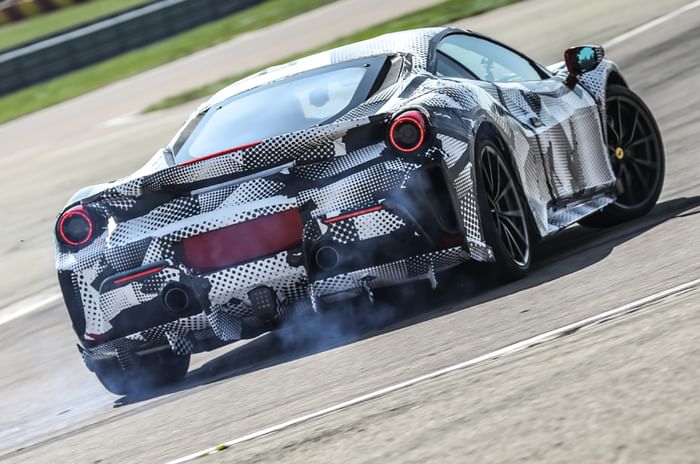
Other notable aero bits include bigger scoops in the front bumper to deflect airflow outwards, ahead of the front wheels (again for better downforce), while at the back, the ‘blown’ spoiler – higher (by 30mm) and longer (+40mm) than the one on the standard 488GTB – is more effective and keeps the rear axle buttoned down.
A particularly clever piece of aero engineering is the redesigned side ducts. On the 488GTB, the air flowing through these ducts was split between the engine air intake and the intercooler. But on the Pista, the air intakes have been moved to the rear spoiler area, where the airflow to the engine is cleaner. This frees up the side intakes (there’s no visible splitter now) to feed air only to the larger intercoolers. This win-win innovation, which makes the engine breathe more readily and cools the intercooler to lower the intake charge temperature by a considerable 15 degrees, contributes to the overall increase in power.
Viewed from the back, the 488 Pista looks like the GTE, purposefully sporting the same ‘double-kink’ diffusers as the WEC racer. The underbody vortex generators have also been optimised to generate 20 percent more downforce. In fact, all the new aero trickery has resulted in a substantial 20 percent increase in downforce at the cost of just a three percent penalty in drag.
The Pista also borrows several weight-saving measures from its racing siblings. The lightweight lithium battery has been carried over from the 488 Challenge, as well as new 20-inch carbon-fibre wheels, a first on a road-legal Ferrari. However, Ferrari hasn’t embraced ultra-light carbon-fibre construction whole-heartedly like McLaren and continues to use aluminium (better suited to higher production volumes) for even lightweight specials like the Pista. But to keep the weight down, there are quite a few carbon-fibre panels like the front and rear bumpers, engine cover and rear spoiler. It may not be the lightest of track-oriented supercars, but the Pista has lost weight where it counts – the unsprung mass is lower and the engine is a considerable 18kg lighter than the 488 GTB’s motor.
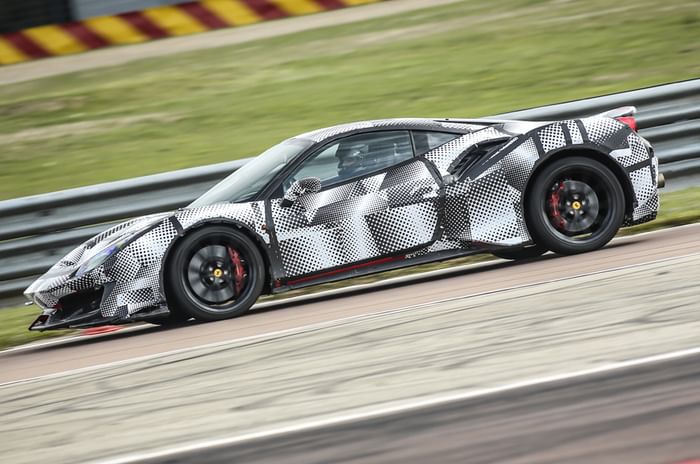
The lighter engine not only contributes to the lower kerb weight of the car but it also influences how the Pista performs. Not surprisingly, lightweight components from the 488 Challenge have made their way into Pista’s V8 as well. Titanium con-rods, a lighter flywheel and crankshaft have cut the inertia of these rotating parts by 17 percent to make the motor even more responsive and faster revving. Of significance is the all-new exhaust system with longer and wider runners, made of Inconel alloy with a 1mm wall thickness. This not only helps reduce weight but influences the engine sound as well.
And what a sound it is! The engine note is much louder and has a sharper edge to it than the 488GTB. Mash open the throttle and the throaty growl at low revs turns into a deep, ear-splitting roar as the V8 catapults to the redline. The engine is now 8dB louder but Ferrari has worked on improving the sound quality as well. “We’ve focused on enhancing engine sound at higher frequencies,” says Vittorio Dini, the head of powertrain at Ferrari. The increased intensity of the engine sound has undoubtedly added to the Pista’s appeal, but I still miss the soulful, high-pitched scream that made the 458’s naturally aspirated V8 motor so special, especially when it neared the 9,000rpm rev limit. The limitations of forced induction don't allow the Pista’s V8 to rev as high, and it has the same 8,000rpm ceiling as the GTB. Also unchanged is the gearing. Typically, a more powerful and lighter car can accommodate taller ratios but Dini says, “We didn’t want to compromise the car’s response in any way by making the gearing taller.”
Response is a word that gets redefined when you drive the Pista. Off the line, it leaps forward with the tiniest flex of the right foot and you can control the progressive throttle with millimetric precision. By artificially reducing torque in the lower gears and unleashing the full 770Nm only in seventh gear, power is delivered with the linearity of a naturally aspirated engine. Turbo lag? If there was a whiff of it in the GTB, it’s been completely snuffed out in the Pista.
Acceleration is simply brutal and it took me half a lap of the Fiorano to adjust to the ferocity of power. It feels noticeably quicker than the GTB, especially in the mid-range, where the torque hits you like a sledgehammer. The engine revs so fast and freely that the shift lights on the steering are constantly illuminated. In manual mode, the sudden rush of power and revs keeps slamming you against the 8,000rpm cut-off; if only this engine had another 1,000 revs to play with. But to use every bit of the powerband down to the last rev, Ferrari has given the Pista a ‘wall’ limiter, which is set to abruptly cut power at exactly 8,000rpm and not progressively reduce it as you near the redline.
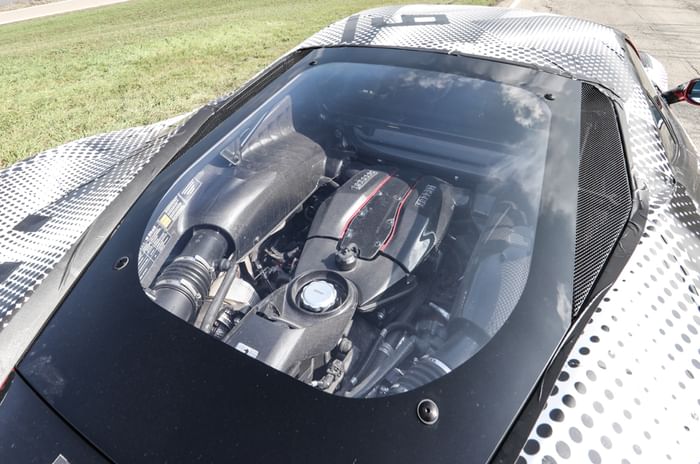
Handling? It’s on another level altogether. The Pista takes the flawless dynamics of the 488GTB and enhances it with more grip and agility. The steering is very quick, especially off-centre, and super accurate, allowing you to explore the brilliantly balanced chassis.
In slow corners, there’s a wee bit of feel-safe understeer dialled in, but overall the Pista feels remarkably neutral. It can be deftly balanced on the throttle even in the relatively restrictive Sport mode. Turn the manettino to ‘CT-OFF’ and you’re in Hero mode where the latest version of Ferrari’s Slide Slip Control (SSC) lets you get impressively sideways but it has a built-in safety net to keep you on the right side of the scenery.
Mention must be made of the new Michelin Sport Cup 2 tyres developed specifically for the Pista. Apart from the terrific grip they offer, it’s the compliance that surprised me on a brief drive in the Italian countryside, outside Fiorano.
A tyre’s sidewall is the first line of defence over sharp edges and ruts, and I was amazed at how well the Michelins, with their rubber-band thin profile, coped with some of the poorly paved surfaces. In fact, the short loop around Maranello also showed how user-friendly the Pista is. The ride is firm but not brittle, and in Auto mode, the gearshifts are nicely smoothened out.
With every one of its track edition, Ferrari has raised the bar and set a new benchmark for supercars. The Pista is all set to follow that tradition.


